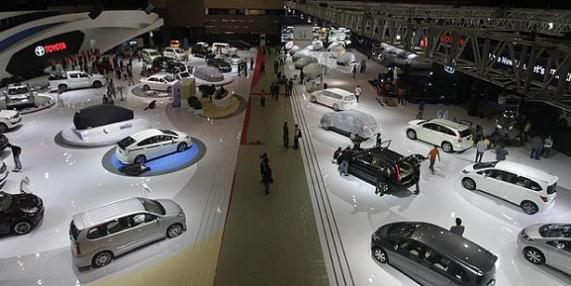Rapid growth of economy puts Indonesia in driver’s seat to become Asean’s biggest automobile market.
Indonesia, which is finally beginning to realise its huge economic potential, is setting its eyes on becoming a major player in the automotive market as global automakers and supporting industries step up their investments.
Given the sheer size of its population, it was inevitable that Indonesia would one day overtake Thailand, as it did last year, as Southeast Asia’s largest domestic market for automobiles by unit sales. Whether it can also supplant Thailand as the automotive production and export hub of Asean remains an open question.
“We believe that every country has its own potential. However, being the largest manufacturing base depends on readiness and seriousness of all parties in the automotive industry, such as the availability of adequate infrastructure, raw materials, local suppliers, and so forth,” said Irwan Priyantoko, chief for external affairs of PT Toyota Motor Manufacturing Indonesia.
The ratio of local car owners is forecast to jump from 80 units per 1,000 people today to 300 by 2025, an increase of 275%, said Masaki Honda, the principal consultant for automotive and transport sectors at Frost & Sullivan Asia Pacific.
Indonesia’s gross domestic product (GDP), which was US$700 billion in 2010, is expected to reach $4.6 trillion by 2025, making it the world’s 10th largest economy and the seventh largest by 2030, he forecast.

Indonesia’s automotive market now stands at about 1 million cars per year which is very attractive for investors, especially when supported by government policies.
Car sales, a key indicator of consumption, last year totalled 894,164 units, up 19.9% from 2010. Sales in Thailand last year were on a pace for 850,000 or more but ended at 794,000, out of total production of 1.46 million, because of the impact of severe floods.
In the first eight months of 2012, car sales in Indonesia rose 23% year-on-year to 714,152 units. Sales of 300,000 units in the final four months to lift the total above 1 million appear achievable, industry executives believe.
“Based on the potential of the highly prospective market, Indonesia will get a lot of investment, such as new investments made by several sole agents of Suzuki, Daihatsu, Toyota, Volkswagen, and General Motors for manufacturing plants,” said Johnny Darmawan, chief organiser of the Indonesia International Motor Show (IIMS) 2012, which ended yesterday.
The progress of Indonesian automotive industry has stimulated the growth of supporting industries, especially small and medium-scale manufacturers, as well the national economy.
Now that the industry is on a roll, executives are asking the government to avoid creating any regulations that would not support expansion or that could hurt domestic sales.
They are especially concerned about government proposals for a minimum down payment of 30% of a car’s purchase price. Current industry practice is to accept down payments ranging from 20-30% from consumers seeking loans.
Requiring 30% or more would make it hard for consumers with modest incomes who have been big buyers of vehicles priced below 200 million rupiah (640,000 baht) per unit, said Yongkie Sugiharto, chairman of the Association of Indonesian Automotive Industries (Gaikindo).
“In fact, the market for the automotive industry, for cars in the range of 150 million to 200 million rupiah is large, about 50% of the total automotive market in the country,” he said.
Amid brisk demand, some companies are running at maximum capacity. PT Suzuki Indomobil Sales (SIS) plans to use the entire capacity of its plant to increase production of its new Ertiga, a small multi-purpose vehicle for which demand has been high.
Data from the association show that Toyota continued to lead the market in August with sales of 25,848 units, up by 2.5% from a year ago. It was followed by Daihatsu (11,028) and Suzuki (10,125).
Indonesia is also still considering developing a national car. Involved in the effort are some small and medium entrepreneurs as well as students from vocational schools. Some products have been tested but none have been mass-produced.
(Bangkok Post)
Cek berita, artikel, dan konten yang lain di Google News












